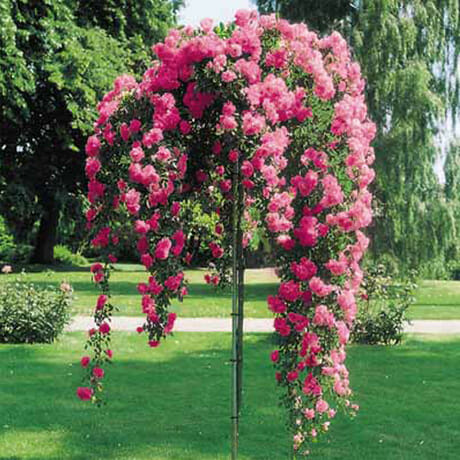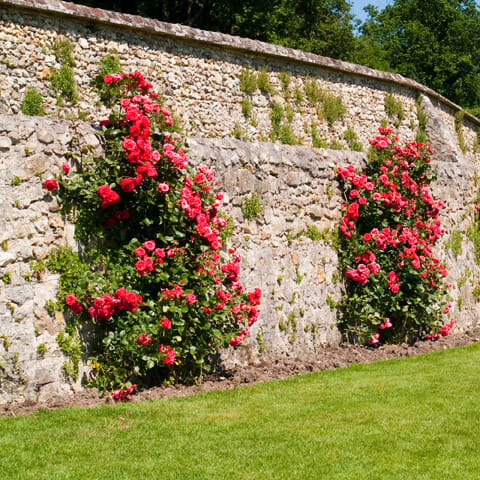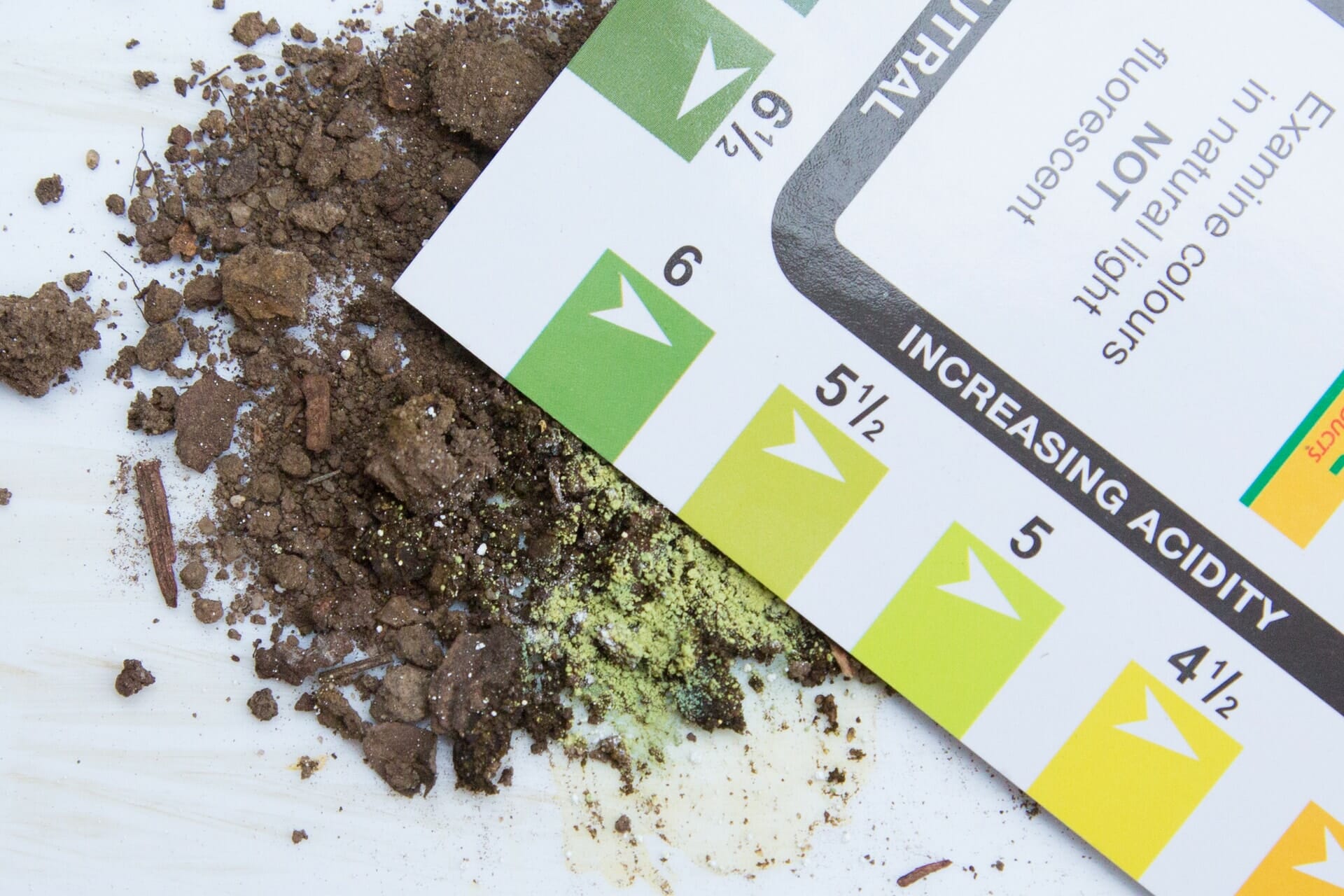Roses are hardy, deciduous, prickly bushes that require plenty of sun, neutral to acidic soils and plenty of water & fertiliser in summer. They are also arguably the most famous flower in the world, prized for their beauty and fragrance.
Roses come in red, yellow, pink, mauve, white and shades in-between. Some varieties are fragrant. Some varieties are free flowering, meaning they produce successive crops throughout the summer. Most popular roses, particularly Icebergs, are free flowering and will produce flowers from mid spring until the end of autumn. Some of the old fashioned roses and some of the climbing and weeping roses only have one spectacular flowering period per year.
There are four main types of roses, and many rose varieties are available in multiple types. Hello Hello Plants & Garden Supplies offer all in a huge range of varieties to suit your needs:

Bush Roses: The most common form of rose and often the cheapest to buy. Bush roses are either grafted on a short cane or not grafted at all! They can be used for hedging, individual specimens or in pots.

Weeping Roses: Like a Standard Rose, these are also grafted onto a tall, straight stem, but with their heads are that of a climbing rose instead of a bush rose. Instead of climbing up a wall, they weep down around the trunk in a cascade of flowers. Just like a standard weeping tree, they make very beautiful features.

Climbing Roses: A rose which has been bred to have a climbing habit, just as its name suggests. Climbing roses can be used to cover walls and fences, grown over archways or be trained onto a trellis.

Standard Roses: These are roses that have been grafted or budded onto a tall, straight cane, giving them a "lollypop" look. They're one of the most popular plants in a formal garden, and look great mixed in with box hedging, bush roses or informal cottage style plantings.
There are a few simple steps to follow to have healthy roses. A well cared for rose can give a lifetime of pleasure! However a neglected rose can look haggard and even its blooms can produce faded or odd colours.
Selection
If you need help choosing whether to plant bush or standard roses or in deciding which rose variety will give you the colour, fragrance and disease resistance you require, just ask out staff.
We have also provided a very comprehensive rose guide on our website, categorized by colour and style, plus with some lists of the top roses for fragrance, cut flowers and mass flowering. Visit our guide here.
Planting your roses
Winter is usually the best time to plant roses as they are dormant and won’t succumb to the stresses of the transplanting process. It is also the best time to get bare rooted roses! These are often cheaper than your potted roses. Click here to find out more about Bare Root Roses.
Before you begin planting, we need to check a few things.
Choose your spot
Roses need approximately 6 hours of sunlight a day so choose a spot in the garden where they are going to get adequate light throughout the year. Keep in mind, some spots in your garden will receive less light in winter than they will in summer.
Make sure your rose won’t be competing with any other plants. This includes the lawn! Roses will not enjoy having to compete with already established plants as this can affect their overall growth. Make sure they’re not planted under large trees (particularly eucalyptus) and lawn is kept back at least 40cm from the base.
Planting your rose
1. Dig a hole in your chosen spot approximately 50cm wide by 30cm deep.
2. Remove the rose from the pot. Place your hand flat with your fingers spread around the base of the stem. Turn the pot and plant upside-down and light tap the rim of the pot. This will gently release the rootball from the pot. If the plant is rootbound, it may take more vigorous tapping and some squeezing of the sides of the pot.
3. Rest the rootball in the hole. The top of the soil of the root ball should be level with the soil level of the hole. Do not bury the rose deeper in the hole.
Back fill the hole with soil and press down gently.
4. Water well to settle the soil and roots.
Bare root roses take a little more care when planting, so we have a complete planting guide for bare rooted roses here!
When you purchase your bare rooted roses from Hello Hello Plants & Garden Supplies, they are wrapped in moist packing material and plastic and should be kept in a cool spot out of the wind and sun until they are ready to be planted. It is best to plant them within two weeks of purchase.
Spacing Roses
Bush roses, climbers and standards should be spaced between 1-2 meters apart. If they are planted at the later distance you will need to plant other flowers between them so your garden won’t look bare.
Watering
Roses are deep rooted and need good occasional soaks in the hot part of Summer, leaves will soon fall if roses are too dry. Roses need to be watered every day in Summer of they are grown in a pot.
Fertiliser
Fertilise regularly with your choice of dynamic lifter or a complete rose food. Be sure not to use just nitrogen fertilisers as they will produce too much green leaf and not enough flowers. If your roses aren’t blooming correctly, which is shown by misshapen petals, scarce blooms or even the colour is a little wrong, this can often be an indication of not enough fertiliser or the incorrect fertiliser has been given. It is important to give your roses the correct fertiliser for the best blooms!
Cultivation
Roses love regular cultivation around their roots to aerate the soil. It’s great to cultivate just after fertilising and in summer around the base to help water soak in.
Disease Resistance
Some roses are more resistant to fungal problems than others. The most resistant are the carpet roses and icebergs. These varieties tend to not succumb to fungal diseases such as black spot.
Black spot occurs when there is not enough ventilation in the area, from old mulch around the base of the rose or too much moisture.
Spraying
Roses need to be sprayed regularly with mild insecticide and fungicide to kill fungal disease and sucking insects. If you only have a few roses and don’t want to waste time mixing chemicals, consider using garden aerosol insecticide and fungicide. There are safe and mild spraying alternatives such as pyrethrum and cleansol. If you are unsure as to what spray or when ask our staff. When the weather turns cold after mid May we normally get black spots and mildew, professional rose growers attempt to control this last fungal attack as they see it as beneficial and helping the rose into dormancy.
Pruning
There are two main pruning times.
Summer: Prune off all the dead flower heads or cut the flower stems and use for indoor displays. This encourages new flowers by stopping the rose using energy on dead or dying flowers.
Winter: This is the serious pruning time. To get the best results from your rose in the growing season you will need to be quite ruthless!
1. Remove all the new, soft growths.
2. Cut back any dead, damaged or dying wood.
3. Remove all the suckers. These are buds that are growing from the understock and are found below the bud union.
4. You should cut it back so that it resembles a claw, don’t worry if you think you have been too ruthless. The plant should have 4-5 main leaders ready for next season.
Your rose will now have been cut by by almost 2/3 of what it was. It may look like a lot but it is necessary and they love it! If you’re unsure, ask our staff or take a walk around the neighbourhood and find some of your local rose enthusiasts. Check out how much they will have cut their roses back by and you will be surprised! That’s one of the reasons they have such beautiful roses.
Climbing roses have to be dealt with slightly differently. For the first two years the only pruning should be the removal of unwanted canes and the other canes should be tied to a trellis. To allow the plant to bush out, at the end of autumn cut off the last 45cms of the cane. These roses should be deadheaded similarly to the other varieties during the summer. A good quality pruning kit is recommended for this process, consisting of secateurs and strong gloves.
Weeping Roses are a climbing style of rose that has been grafted or budded onto a very tall rose cane. These need to be supported by a rose ring to hold them up and give them a full shape at the top before they cascade to the ground. Dead heads should be removed in the summer time. During winter dead, dying or damaged wood should be removed. This is also a good time to de-clutter and remove some tangled branches.















